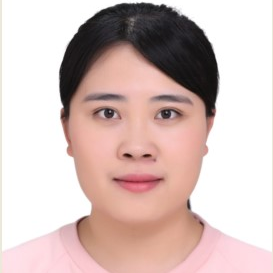Design and Control of Electrical Machines in Electric Vehicles, 2nd Edition
A special issue of World Electric Vehicle Journal (ISSN 2032-6653).
Deadline for manuscript submissions: 30 April 2024 | Viewed by 1819
Special Issue Editors
Interests: electrical machines and their control systems; electric drive systems of electric vehicles; brushless DC motor; impedance source converter
Special Issues, Collections and Topics in MDPI journals
Interests: design and optimization of permanent magnet machine; analytical modeling; numerical analysis
Special Issues, Collections and Topics in MDPI journals
Special Issue Information
Dear Colleagues,
The electrical machine and its drives are the energy core of electric vehicles. The electric drive system of electric vehicles is mainly composed of an electrical machine, a DC–DC converter, an inverter, a motor controller, a transmission mechanism, etc. The optimized design method and advanced control technology affect the performances of electric vehicles, including the recharge mileage, noise level, safety, manufacturing costs, maintenance costs, and operating life.
In order to improve the operating performance, it is necessary to explore and research around electrical machines’ designs and the control strategies for electric vehicles. In terms of motor ontology, the rapid optimization of electromagnetic analyses, multiphase motors, and permanent magnet motors is worthy of attention. In terms of power converters of electric vehicles, the DC–DC converter, fault-tolerant converter, impedance source converter, and SiC drives are research hotspots. In terms of motor control algorithms, it is necessary to further study the sensorless control method, fault monitoring technology, high-performance torque control strategy, braking control, and energy recovery technology to increase the speed, range, and high-efficiency operating area of electric vehicle motors.
Dr. Xinmin Li
Dr. Liyan Guo
Guest Editors
Manuscript Submission Information
Manuscripts should be submitted online at www.mdpi.com by registering and logging in to this website. Once you are registered, click here to go to the submission form. Manuscripts can be submitted until the deadline. All submissions that pass pre-check are peer-reviewed. Accepted papers will be published continuously in the journal (as soon as accepted) and will be listed together on the special issue website. Research articles, review articles as well as short communications are invited. For planned papers, a title and short abstract (about 100 words) can be sent to the Editorial Office for announcement on this website.
Submitted manuscripts should not have been published previously, nor be under consideration for publication elsewhere (except conference proceedings papers). All manuscripts are thoroughly refereed through a single-blind peer-review process. A guide for authors and other relevant information for submission of manuscripts is available on the Instructions for Authors page. World Electric Vehicle Journal is an international peer-reviewed open access monthly journal published by MDPI.
Please visit the Instructions for Authors page before submitting a manuscript. The Article Processing Charge (APC) for publication in this open access journal is 1400 CHF (Swiss Francs). Submitted papers should be well formatted and use good English. Authors may use MDPI's English editing service prior to publication or during author revisions.
Keywords
- novel permanent magnet synchronous machine
- high power density
- high efficiency
- electric vehicles
- multimotor systems
- multilevel converters
- impedance source converter
- predictive control
- servo motor
- fault diagnosis
- torque control
- sensorless
- efficiency optimization
- harmonic analysis
- energy recovery
- motor drives
- hybrid power
- DC–DC converter






